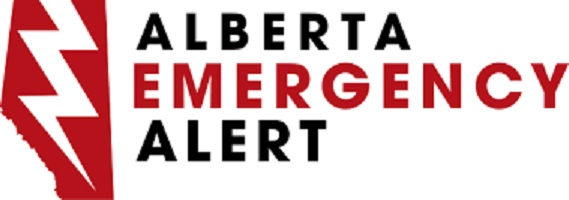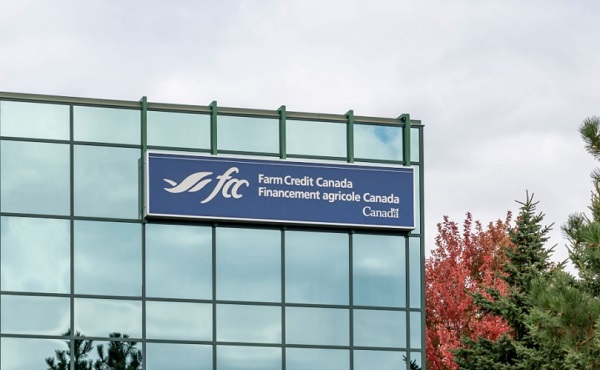Alberta
Big boost for energy companies working on emission reduction innovations

From the Province of Alberta
In October 2019, Emissions Reduction Alberta (ERA) launched the Natural Gas Challenge and invited technology developers to share project concepts for innovation opportunities in Alberta’s natural gas industry.
Alberta’s government is providing $58 million through ERA to support this opportunity to create jobs in the natural gas sector.
Funding recipients include a project that uses artificial intelligence to locate and measure methane emissions, and a project to produce renewable natural gas from biogas at an agricultural facility that will be the first of its kind in Alberta.
The 20 new projects have the potential to reduce a cumulative one million tonnes of emissions by 2030 – the same as taking about 750,000 cars off Alberta’s roads. These projects will also get Albertans back to work by creating more than 750 new jobs when they are needed most.
“Alberta is already a leader when it comes to our environmental footprint, and our ongoing work with Emissions Reduction Alberta will help us become even better.”
Projects were selected through ERA’s competitive review process. Experts in science, engineering, business development, commercialization, financing, and greenhouse gas quantification reviewed 117 submissions and chose projects based on the strongest potential for success.
“With Alberta’s 300-year supply of affordable natural gas, a technically skilled workforce and world-class environmentally responsible facilities, there is tremendous opportunity for Alberta to compete with international markets. Funding opportunities like this, in partnership with Emissions Reduction Alberta, are critical to attracting investments that will grow Alberta’s economy by reducing upfront costs, while reducing our province’s share of global emissions.”
Government funds ERA through the Technology Innovation and Emissions Reduction (TIER) system. TIER is an improved system to help energy-intensive facilities find innovative ways to reduce emissions and invest in clean technology to stay competitive and save money. Facilities can pay into a TIER Fund, which is used for innovative and cleaner Alberta-based projects like those selected under the Natural Gas Challenge.
ERA’s funding model requires that every dollar committed to an initiative is matched or exceeded by additional investments, which ensures there is a market demand for the technology. Government’s $58-million investment through ERA has been more than doubled by private and public investment to stimulate the economy, lower emissions and create jobs, leading to a total of $155 million in funding.
“Investing in the next wave of technological advancements will help Canada’s natural gas industry achieve new efficiencies, reduce costs, and continue to drive world-leading environmental performance.”
A complete list of the successful Natural Gas Challenge projects can be found here.
“We are grateful for ERA’s support to help fund Canadian Natural’s ALT-FEMP project. By working together, we will develop and pilot technologies that can be adopted across the industry to enable early detection of methane emissions through cost-effective methods, ultimately accelerating industry’s reductions in greenhouse gas emissions.”
“This project is an important first step for Alberta, which has all the ingredients to be a leader in the hydrogen economy – including the ability to produce a near zero-emission hydrogen at a lower cost than most jurisdictions in the world.”
Quick facts
- In 2018, Alberta produced almost 70 per cent of the marketable natural gas in Canada.
- ERA works with government, industry and innovators to support technologies that reduce greenhouse gas emissions.
- Since 2009, ERA has committed $607 million in funds from industrial carbon pricing toward 183 projects worth $4.1 billion that are reducing emissions, keeping industries competitive, and leading to new investment opportunities.
- These 183 projects are estimated to deliver cumulative reductions of 34.8 million tonnes of emissions by 2030.
If successful, these technology innovations will lead to cumulative GHG reductions of almost one million tonnes of CO2e by 2030—equivalent to the GHG emissions from 750,000 passenger vehicles driven for one year. It is anticipated these projects will also deliver approximately 760 new jobs.
Funding is being sourced from the carbon price paid by Large Final Emitters in Alberta through the Technology Innovation and Emissions Reduction (TIER) fund.
The following projects were selected for funding:
UPSTREAM PROJECTS:
MultiSensor Canada Inc.
Methane Imaging Solution for Continuous Leak Detection and Quantification for Tank Emissions and Facility Monitoring
Total project value: $3,200,000 | ERA commitment: $1,600,000
Permanent installation and demonstration of an infrared camera at 100 well sites to provide continuous leak detection and quantification for tank emissions and facility monitoring.
Qube Technologies
Emissions Reductions Through Artificial Intelligence
Total project value: $16,200,000 | ERA commitment: $4,000,000
Deployment of an industrial device designed to collect large quantities of data to use artificial intelligence and machine learning techniques to better quantify, locate, and classify emissions.
University of Calgary:
Field-Scale Deployment and Acceleration of Made-In-Alberta Technology for Fugitive Emissions Detection and Reduction
Total project value: $3,200,000 | ERA commitment: $1,600,000
Full-scale, field pilot of a new vehicle-based technology designed for equipment-level emissions screening to support effective regulatory leak detection and repair.
Canadian Natural Resources Limited
Fugitive Emissions Study Using Aerial Detection Technology
Total project value: $1,900,000 | ERA commitment: $930,000
Pilot project of both aerial screening technology and ground-based detection at conventional oil and gas facilities to validate technology performance and inform a broader Alternative Fugitive Emissions Management Program (FEMP).
Challenger Technical Services
Multi Component Downhole Injection System
Total project value: $2,600,000 | ERA commitment: $1,000,000
Development, testing, and validation of a multicomponent downhole injection system that uses epoxy resins to rapidly seal leaking oil and gas wells and eliminate surface casing vent flow.
Petroleum Technology Alliance Canada (PTAC)
Affordable Zero-Emission Fail-Safe Electric Dump Valve Actuator (EDVA) Phase 2
Total project value: $2,200,000| ERA commitment: $550,000
Applied research, prototype design and development, and field pilot testing of an electrically-driven valve actuator that is more compact, powerful, and lower maintenance than alternative pneumatic options.
Kinitics Automation Limited
Valve Actuator for Gas Producers
Total project value: $1,100,000 | ERA commitment: $550,000
Testing a novel electric actuator at 15 well sites in Alberta to validate the technology as a cost effective, technically viable alternative to eliminate venting from established pneumatic devices.
Westgen Technologies Inc
Unlocking EPOD Economic Zero Bleed Pneumatic Instrument Air Retrofit Solution
Total project value: $4,000,000 | ERA commitment: $1,300,000
Demonstration of a solar-hybrid power generation system for remote well sites to provide reliable electricity to prevent gas venting from pneumatic devices in a cost-effective manner.
Modern Wellbore Solutions
Demonstration of a Full-Scale Multilateral Junction Assembly
Total project value: $12,100,000 | ERA commitment: $3,500,000
Full-scale deployment of a multilateral junction tool assembly that will allow natural gas operators to drill, complete, and operate multi-branched wells for unconventional reservoirs. The technology reduces emissions by enabling lateral junctions rather than requiring separate wells.
Tourmaline Oil Corp.
Natural Gas Mobile Unit for Drilling Rig Power Generation
Total project value: $8,000,000 | ERA commitment: $3,200,000
Pilot demonstration of a plug and play, mobile power generation system for drilling rigs that uses smart energy to automatically start and stop generators to match the power demand of the rig.
DOWNSTREAM AND VALUE-ADDED PROJECTS:
ATCO Gas and Pipelines Ltd.
Fort Saskatchewan Hydrogen Blending
Total project value: $5,700,000 | ERA commitment: $2,800,000
Pilot project to test hydrogen blending in ATCO’s Fort Saskatchewan natural gas distribution system. The project will source and test equipment and determine applicability of existing codes, standards, and legislation.
Ekona Power Inc.
Development and Field Testing of a Tri-Generation Pyrolysis (TGP) System for Low-cost, Clean Hydrogen Production
Total project value: $13,800,000 | ERA commitment: $5,000,000
Prototyping a new approach to converting natural gas to hydrogen and a solid carbon by-product representing a new pathway to produce zero-emissions hydrogen, electricity, and other products by decarbonizing natural gas.
Standing Wave Reformers Inc.
A New Wave in Hydrogen Production
Total project value: $8,200,000 | ERA commitment: $3,000,000
Design optimization, system integration, pilot demonstration, techno-economic analysis, and advancement of commercial deployment plans for a technology system to decarbonize natural gas.
ATCO Gas and Pipelines Ltd.
ATCO and Future Fuel RNG
Total project value: $15,900,000 | ERA commitment: $7,900,000
First-of-its-kind commercial demonstration to produce renewable natural gas (RNG) to be sold and used within the province in Compressed Natural Gas (CNG) fleet vehicles and commercial applications.
Sustainitech Inc.
Co-Locating Natural Gas and Indoor Agriculture for Alberta’s Future
Total project value: $17,900,000 | ERA commitment: $5,000,000
Design, construction, and operation for a first-of-kind commercial deployment of a modular farming system that combines automation, hydroponics, adsorption cooling, and advanced lighting to grow crops.
Enersion Inc.
Greenest Natural Gas-Powered Quad-generation with a 41% GHG Reduction
Total project value: $3,800,000 | ERA commitment: $1,800,000
Technology that uses natural gas to generate electricity, cooling, and heating in an integrated package for multiple applications, including industrial, agricultural, commercial, and residential sectors
Stone Mountain Technologies, Inc.
Demonstration of Thermally Driven Heat Pumps for Residential Heating Applications
Total project value: $2,000,000 | ERA commitment: $990,000
Design and prototyping of technology that uses natural gas to drive a heat pump cycle. Unlike electrically-driven heat pumps, the technology is ideal for cold climates.
Anax Power
Turboexpander Project
Total project value: $6,200,000 | ERA commitment: $2,400,000
Installation and operation of technology that provides clean, distributed electricity from the pressure and flow of natural gas without combustion.
Innovative Fuel Systems
Advanced Dual-Fuel System Commercial Demonstration
Total project value: $2,800,000 | ERA commitment: $1,200,000
Commercial validation of technology that allows heavy duty truck engines to displace up to 50 per cent of their diesel with cleaner burning natural gas.
Converting Landfill Gas to Renewable Natural Gas
Total project value: $25,000,000 | ERA commitment: $10,000,000
The project will explore opportunities to upgrade landfill gas (LFG) at Clover Bar Landfill and inject it into Alberta’s natural gas system as renewable natural gas (RNG). Stakeholders in the Clover Bar Landfill, the City of Edmonton and Capital Power, are exploring these possible opportunities.
All recipients are required to produce a final outcomes report that will be shared publicly for the broader benefit of Alberta. All projects involve field piloting, demonstration, or commercial deployment of technology within the province.
Click the links below for more details on ERA’s Natural Gas Challenge:
- Full Project Proposal Guidelines
- Call for Expressions of Interest Guidelines
- Eligible Expense and Cost Instructions
- Privacy, Confidentiality, Data, and Security Policy
- Frequently Asked Questions
- Watch the Informational Webinar
- Learn more about ERA’s funding process.
WHY TARGET THE NATURAL GAS VALUE CHAIN?
Natural gas is a critical resource, providing heat and power for Alberta’s residential, commercial, and industrial sectors. It is the least GHG emitting of traditional fossil fuels, and a global shift toward natural gas from coal- and oil‑based resources is underway.
Canada is the fourth largest natural gas producer in the world, with net exports totaling $6.1 billion in 2018. Alberta produces almost 70 per cent of the marketable natural gas in the country. In 2017, the province emitted 35 million tonnes of CO2e from natural gas production and processing. A significant opportunity exists to improve cost competitiveness along Alberta’s natural gas value chain and reduce GHG emissions.
The Government of Alberta is committed to revitalizing Alberta’s natural gas sector. The province is developing and implementing a robust strategy with key recommendations from the 2018 Roadmap to Recovery Report, a document advising the government on reviving Alberta’s natural gas industry.
Alberta
Alberta Emergency Alert test – Wednesday at 1:55 PM

Minister of Public Safety and Emergency Services Mike Ellis issued the following statement on the upcoming Alberta Emergency Alert test:
“On Nov. 19, 2025, Alberta will take part in a scheduled test of the National Public Alerting System. At 1:55 p.m., an Alberta Emergency Alert test will be issued across multiple channels including television, radio, wireless devices, websites, social media, the Alberta Emergency Alert mobile app and directly to compatible cellphones across the province.
“While alert interruptions can be inconvenient, these tests are essential. They help us identify and resolve technical issues, ensuring the system functions properly when it matters most. Regular testing, typically held in May and November, is a key part of keeping Albertans informed during real emergencies such as tornadoes, wildfires, floods and Amber Alerts.
“To stay connected, I urge all Albertans to download the Alberta Emergency Alert app, which delivers critical warnings directly to your phone. To receive alerts, your mobile device must be compatible, connected to an LTE 4G network or higher, or connected to Wi-Fi with the app installed. If your phone is on silent, the alert will still appear but may not produce sound.
“This test is also a valuable opportunity to talk with your household, friends and coworkers about emergency preparedness. Questions to ask:
- Do you have an emergency kit with enough supplies for at least 72 hours?
- Have you included essentials like water, non-perishable food, flashlights, batteries and a first aid kit?
- Do you have copies of important documents and a list of emergency contacts?
- Is your kit stored in an easy-to-access location and does everyone know where it is?
“Preparedness doesn’t have to be complicated. Simple steps like having an emergency plan and essential supplies can make a big difference to protect yourself and your household.”
Related information
Alberta
Carney government’s anti-oil sentiment no longer in doubt

From the Fraser Institute
The Carney government, which on Monday survived a confidence vote in Parliament by the skin of its teeth, recently released a “second tranche of nation-building projects” blessed by the Major Projects Office. To have a chance to survive Canada’s otherwise oppressive regulatory gauntlet, projects must get on this Caesar-like-thumbs-up-thumbs-down list.
The first tranche of major projects released in September included no new oil pipelines but pertained largely to natural gas, nuclear power, mineral production, etc. The absence of proposed oil pipelines was not surprising, as Ottawa’s regulatory barricade on oil production means no sane private company would propose such a project. (The first tranche carries a price tag of $60 billion in government/private-sector spending.)
Now, the second tranche of projects also includes not a whiff of support for oil production, transport and export to non-U.S. markets. Again, not surprising as the prime minister has done nothing to lift the existing regulatory blockade on oil transport out of Alberta.
So, what’s on the latest list?
There’s a “conservation corridor” for British Columbia and Yukon; more LNG projects (both in B.C.); more mineral projects (nickel, graphite, tungsten—all electric vehicle battery constituents); and still more transmission for “clean energy”—again, mostly in B.C. And Nunavut comes out ahead with a new hydro project to power Iqaluit. (The second tranche carries a price tag of $58 billion in government/private-sector spending.)
No doubt many of these projects are worthy endeavours that shouldn’t require the imprimatur of the “Major Projects Office” to see the light of day, and merit development in the old-fashioned Canadian process where private-sector firms propose a project to Canada’s environmental regulators, get necessary and sufficient safety approval, and then build things.
However, new pipeline projects from Alberta would also easily stand on their own feet in that older regulatory regime based on necessary and sufficient safety approval, without the Carney government additionally deciding what is—or is not—important to the government, as opposed to the market, and without provincial governments and First Nations erecting endless barriers.
Regardless of how you value the various projects on the first two tranches, the second tranche makes it crystal clear (if it wasn’t already) that the Carney government will follow (or double down) on the Trudeau government’s plan to constrain oil production in Canada, particularly products derived from Alberta’s oilsands. There’s nary a mention that these products even exist in the government’s latest announcement, despite the fact that the oilsands are the world’s fourth-largest proven reserve of oil. This comes on the heels on the Carney government’s first proposed budget, which also reified the government’s fixation to extinguish greenhouse gas emissions in Canada, continue on the path to “net-zero 2050” and retain Canada’s all-EV new car future beginning in 2036.
It’s clear, at this point, that the Carney government is committed to the policies of the previous Liberal government, has little interest in harnessing the economic value of Canada’s oil holdings nor the potential global influence Canada might exert by exporting its oil products to Asia, Europe and other points abroad. This policy fixation will come at a significant cost to future generations of Canadians.
-

 Agriculture2 days ago
Agriculture2 days agoFederal cabinet calls for Canadian bank used primarily by white farmers to be more diverse
-

 Daily Caller2 days ago
Daily Caller2 days ago‘Holy Sh*t!’: Podcaster Aghast As Charlie Kirk’s Security Leader Reads Texts He Allegedly Sent University Police
-

 Daily Caller21 hours ago
Daily Caller21 hours agoDemocrats Explicitly Tell Spy Agencies, Military To Disobey Trump
-

 Uncategorized2 days ago
Uncategorized2 days agoCost of bureaucracy balloons 80 per cent in 10 years: Public Accounts
-

 Addictions2 days ago
Addictions2 days agoActivists Claim Dealers Can Fix Canada’s Drug Problem
-

 Alberta1 day ago
Alberta1 day agoEdmonton and Red Deer to Host 2027 IIHF World Junior Hockey Championship
-

 Alberta1 day ago
Alberta1 day agoAlbertans choose new licence plate design with the “Strong and Free” motto
-

 Crime9 hours ago
Crime9 hours ago‘Modern-Day Escobar’: U.S. Says Former Canadian Olympian Ran Cocaine Pipeline with Cartel Protection and a Corrupt Toronto Lawyer










